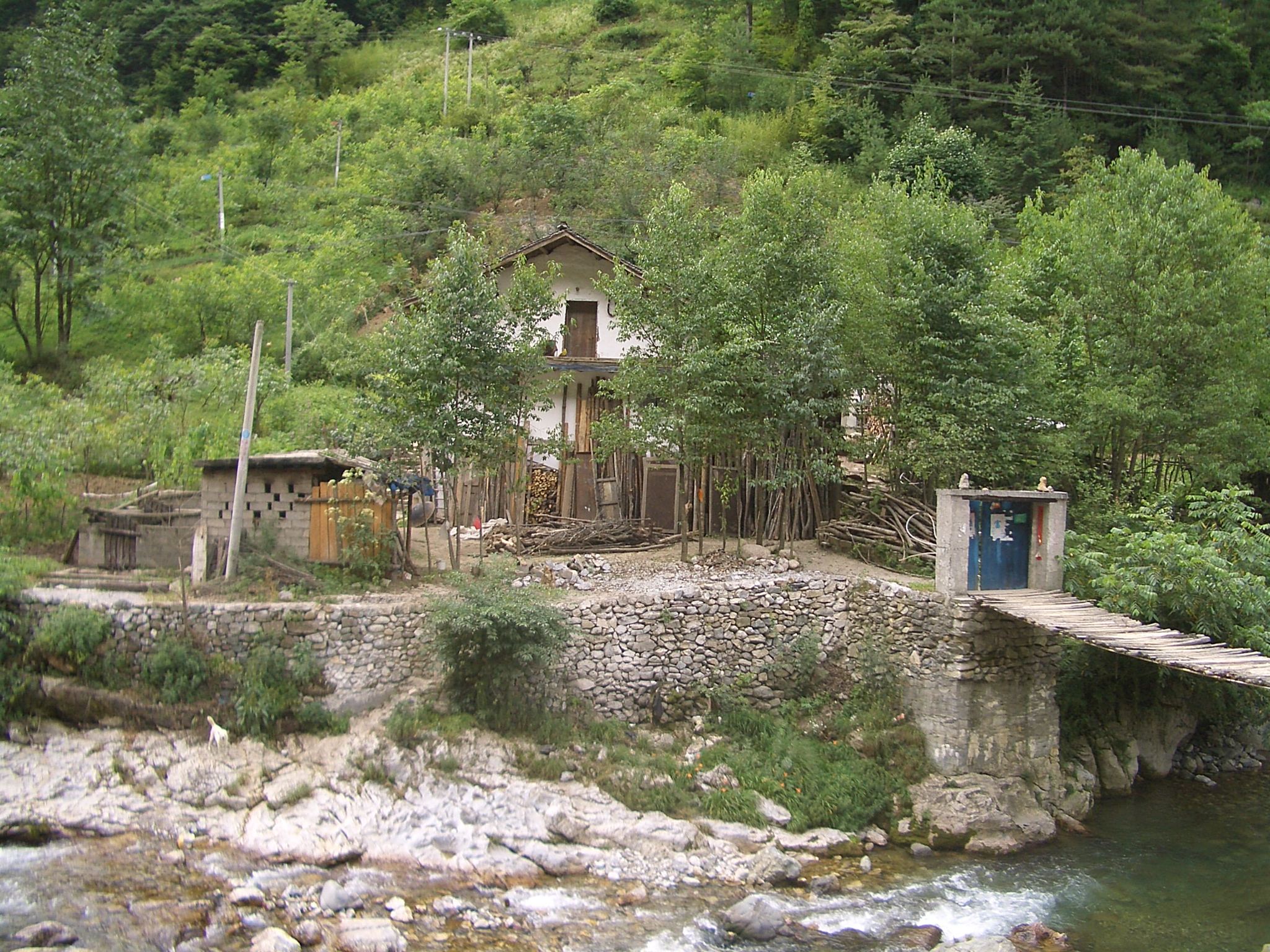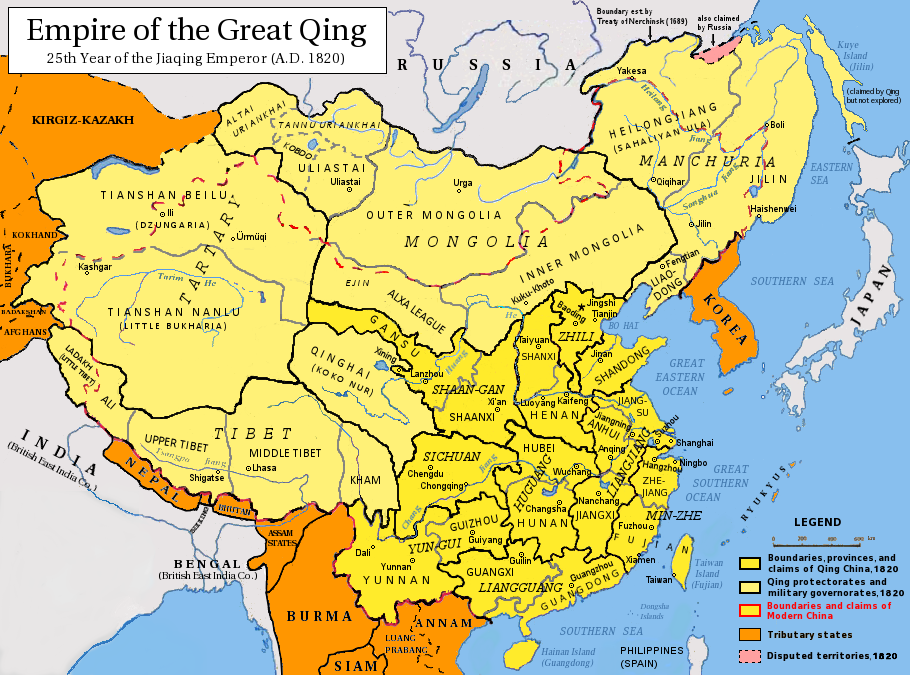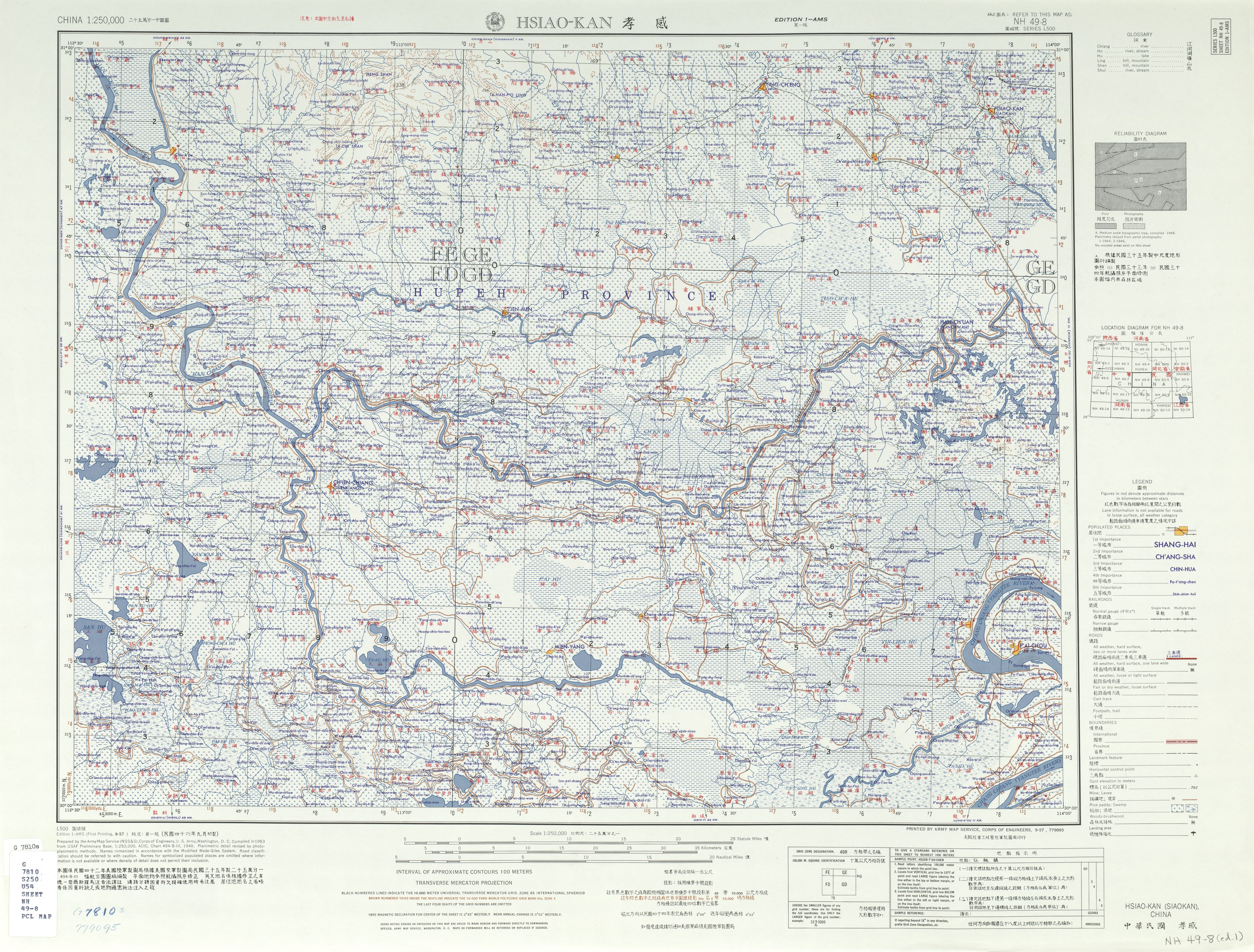|
Shennongjia
Shennongjia Forestry District ( zh, s=神农架林区, p=Shénnóngjià Línqū) is a county-level administrative unit (a "forestry district") in northwestern Hubei province, People's Republic of China, directly subordinated to the provincial government. It occupies in western Hubei, and, as of 2007 had the resident population estimated at 74,000 (with the ''registered'' population of 79,976). On July 17, 2016, Hubei Shennongjia was listed as a World Heritage Site, the 50th World Heritage Site in China, because of its exceptional floral and faunal biodiversity and its protection of many rare, endangered, and endemic species. The population is predominantly (95%) Han Chinese, the remaining 5% being mostly Tujia. Administration The administrative status of Shennongjia is rather unusual, in that it is the only county-level administrative unit of the People's Republic of China designated a "forestry district" (), rather than a more usual county or county-level city. Shennongjia's ... [...More Info...] [...Related Items...] OR: [Wikipedia] [Google] [Baidu] |
Muyu, Hubei
Muyu (; literally, " Wooden fish"; sometimes also , Muyuping) is a town in Shennongjia Forestry District, in the west of Hubei province, People's Republic of China. Located on China National Highway 209, it is the main population and services center of the southern part of the district. The town is stretched along the upper course of Xiang Stream (Xiang Xi) (or perhaps one of its tributaries), which flows from Shennongjia mountains southeast toward the Yangtze. The river valley is paralleled by China National Highway 209. Serving as the natural "gateway" to Shennongjia National Nature Reserve 2007-06-15. Retrieved 2009-10-04. (the entry to which is at Yazikou Junction, some north of Muyu), Muyu and its vicinity is the location of most of the hotels and tourist services ... [...More Info...] [...Related Items...] OR: [Wikipedia] [Google] [Baidu] |
Hubei
Hubei is a province of China, province in Central China. It has the List of Chinese provincial-level divisions by GDP, seventh-largest economy among Chinese provinces, the second-largest within Central China, and the third-largest among inland provinces. Its provincial capital at Wuhan serves as a major political, cultural, and economic hub for the region. Hubei is associated with the historical state of E that existed during the Western Zhou dynasty (771 BCE). Its name means 'north of the lake', referring to Dongting Lake. It borders Henan to the north, Anhui and Jiangxi to the east, Hunan to the south, and Chongqing and Shaanxi to the west. The high-profile Three Gorges Dam is located at Yichang in the west of the province. History The Hubei region was home to sophisticated Neolithic cultures. By the Spring and Autumn period (770–476 BC), the territory of today's Hubei formed part of the powerful Chu (state), State of Chu. Chu, nominally a tributary state of the Zh ... [...More Info...] [...Related Items...] OR: [Wikipedia] [Google] [Baidu] |
Xingshan County
Xingshan County () is a county of western Hubei, People's Republic of China. It is under the administration of Yichang Prefecture-level City. Geography The county occupies the mountainous north-western corner of Yichang prefecture ("prefecture-level city"), bordering on Badong County in the west and Shennongjia in the north. The highest mountains within the county are Mount Wanchao ( elevation) and Mount Wanfu (). The county seat is in Gaofu town; this is the location that is simply marked as "Xingshan" on less detailed maps. Although the county is away from the Yangtze River itself, and most of its land is at high elevations, the construction of the Three Gorges Dam resulted in the flooding of the valley of the Yangtze's tributary Xiang Xi (香溪, "Fragrant Stream"), where many of the county's residents lived. Accordingly, some 20,000 residents had to be relocated from the flooded areas. [...More Info...] [...Related Items...] OR: [Wikipedia] [Google] [Baidu] |
Administrative Divisions Of The People's Republic Of China
The administrative divisions of China have consisted of several levels since 1412, due to mainland China's large population and geographical area. In the People's Republic of China, the constitution provides for three levels of government. However in practice, there are five levels of local government; the provincial (province, autonomous region, municipality, and special administrative region), prefecture, county, township, and village. Since the 17th century, provincial boundaries in mainland China have remained largely static. Major changes since then have been the reorganization of provinces in the northeast after the establishment of the People's Republic of China in 1949 and the formation of autonomous regions, based on Soviet ethnic policies. The provinces serve an important cultural role in China, as people tend to identify with their native province. Levels The Constitution of the People's Republic of China provides for three levels: the provincial, the county l ... [...More Info...] [...Related Items...] OR: [Wikipedia] [Google] [Baidu] |
Sub-prefecture-level City
A sub-prefectural municipality (), sub-prefectural city, or vice-prefectural municipality, is an unofficial designation for a type of administrative division of China. A sub-prefectural city is officially considered to be a county-level city, but it has more power ''de facto'' because the cadres assigned to its government are one half-level higher in rank than those of an "ordinary" county-level city—though still lower than those of a prefecture-level city. While county-level cities are under the administrative jurisdiction of prefecture-level divisions, sub-prefectural cities are often (but not always) administered directly by the provincial government, with no intervening prefecture level administration. Examples of sub-prefectural cities that does not belong to any prefecture: Jiyuan (Henan Province), Xiantao, Qianjiang and Tianmen (Hubei), Shihezi, Tumxuk, Aral, and Wujiaqu (Xinjiang). Examples of sub-prefectural cities that nevertheless belong to a prefecture: Gol ... [...More Info...] [...Related Items...] OR: [Wikipedia] [Google] [Baidu] |
Simplified Chinese Character
Simplified Chinese characters are one of two standardized Chinese characters, character sets widely used to write the Chinese language, with the other being traditional characters. Their mass standardization during the 20th century was part of an initiative by the People's Republic of China (PRC) to promote literacy, and their use in ordinary circumstances on the mainland has been encouraged by the Chinese government since the 1950s. They are the official forms used in mainland China, Malaysia, and Singapore, while traditional characters are officially used in Hong Kong, Macau, and Taiwan. Simplification of a component—either a character or a sub-component called a Radical (Chinese characters), radical—usually involves either a reduction in its total number of Chinese character strokes, strokes, or an apparent streamlining of which strokes are chosen in what places—for example, the radical used in the traditional character is simplified to to form the simplified charac ... [...More Info...] [...Related Items...] OR: [Wikipedia] [Google] [Baidu] |
National Bureau Of Statistics Of The People's Republic Of China
The National Bureau of Statistics () is a deputy-ministerial level agency directly under the State Council of China. Established in August 1952, the bureau is responsible for collection, investigation, research and publication of statistics concerning the nation's economy, population and other aspects of the society. Kang Yi has served as the commissioner of the bureau since 3 March 2022. Responsibilities The bureau's authority and responsibilities are defined in ''Statistics Law of the People's Republic of China''. It is responsible for the research of the nation's overall statistics and oversees the operations of its local counterparts. Organizations The bureau is overseen by a commissioner, several deputy commissioners (currently four), a chief methodologist, a chief economist, and a chief information officer. It is composed of 18 departments, oversees 12 affiliated institutions, and manages 32 survey organizations stationed in respective provinces. It also operates ... [...More Info...] [...Related Items...] OR: [Wikipedia] [Google] [Baidu] |
Fang County
Fang County or Fangxian () is a county of northwestern Hubei province, People's Republic of China. It is under the administration of Shiyan City. The county spans an area of , and has a population of 390,991 as of 2010. History During the Spring and Autumn period, the region was known as Fangzhu (). During the Warring States period, the area belonged to the State of Chu. The area was incorporated as Fangling County () during the Qin dynasty, where it belonged to the Hanzhong Commandery. In 636 CE, the area of present-day Fang County was organized as . In 1277, Fang Prefecture was changed to Fang County, which it has remained since. It was placed under the jurisdiction of . In 1476, Xiangyang Fu was changed to . Republic of China Upon the establishment of the Republic of China, the area was placed under the jurisdiction of . In 1931, the area was re-organized as the 11th of Hubei Province. In 1936, it was changed to be under the 8th Administrative Inspectorate of Hubei P ... [...More Info...] [...Related Items...] OR: [Wikipedia] [Google] [Baidu] |
Baokang County
Baokang County () is a county of northwestern Hubei province, People's Republic of China. It is under the administration of Xiangyang City. Administrative divisions Ten towns: * Chengguan (), Huang (), Houping (), Longping (), Dianya (), Maliang (), Xiema (), Maqiao (), Siping (), Guoduwan () The only township is Liangyu Township () Climate Regional Specialty Crepe Myrtle Native in the mountains, Crepe Myrtle is named as the official flower for the county. Crepe Myrtle in Baokang is known for its varieties and long history. Baokang county has six species of Crepe Myrtle. Some are more than 1000 years old. Hotsprings Mineral Resources Baokang County has great volume of mineral resources. Twenty four types of mineral resources have been discovered in its area, twelve of which the potential volume of them were determined. Metal mineral resources in this area include iron, manganese, vanadium, copper, lead and zinc, multi-metal, and alumina. Non-metal mineral r ... [...More Info...] [...Related Items...] OR: [Wikipedia] [Google] [Baidu] |
Badong County
Badong County () is a county located in western Hubei province, People's Republic of China, bordering Chongqing municipality to the west. It is the northernmost county-level division under the administration of Enshi Tujia and Miao Autonomous Prefecture, Enshi Prefecture. The Yangtze River flows through the county and the county seat is located just east of the Wu Gorge in the Three Gorges region. Badong County is famous for the Shennong Stream gorges located near Badong town. The stream itself falls into the Yangtze opposite the Badong center city. The Badong county seat, commonly referred to simply as "Badong", is in the Town (China), town of Xinling (), located on the high southern banks of the Yangtze River channel. The Yangtze valley was flooded during the first decade of the 21st century after the construction of the Three Gorges Dam to the east, but Badong county seat was mostly above the flood line, and so more of the original town survives than is the case in many other ... [...More Info...] [...Related Items...] OR: [Wikipedia] [Google] [Baidu] |
Qianjiang, Hubei
Qianjiang ( zh, s= , t= , p=Qiánjiāng) is a sub-prefectural city of south-central Hubei Province, China. The city spans an area of , and has a population of 946,277 as of 2010. Toponymy Qianjiang's name means river diving, with the first character referring to qián shuǐ, the Chinese verb for diving, and the second character, jiāng, meaning river. History During the Spring and Autumn period and the Warring States period, the area belonged to the independent state of Chu. In the Three Kingdoms period, the area of present-day Qianjiang was part of the Eastern Wu. Portions of present-day Qianjiang were ruled by the Sui dynasty as part of . Part of Qianjiang was incorporated into the Tang dynasty as Jiangling County (). In 857 CE, the area was placed under the . During the Five Dynasties and Ten Kingdoms period, the area belonged to the independent kingdom of Jingnan. Qianjiang County () was first organized in 965 CE, during the Song dynasty. In 1293, during the Y ... [...More Info...] [...Related Items...] OR: [Wikipedia] [Google] [Baidu] |
Tianmen
Tianmen () is a sub-prefecture-level city (sometimes considered a county-level city) in central Hubei Province, China. It is on the Jianghan Plain, on the west side of Wuhan (the biggest city of Central China, as well as the capital of Hubei) and the northeast of Jingzhou (a famous city in Chinese history). Formerly known as Jingling (), it was renamed to Tianmen in 1726 during the Qing dynasty. The name comes from the Sky Gate Mountains (meaning “tianmen” in Chinese) which lie northwest of the city. It is the hometown of Lu Yu, the writer of '' The Classic of Tea'', who is respected as "the Sage of Tea" for his contribution to the tea culture. Tianmen has the largest population among the same-level cities in Central China. It was honoured "National Civilized City" by Chinese government in 2014. History Prehistoric ancient settlements in the Tianmen area existed at least 7,000 to 8,000 years ago as evidenced by Shijiahe neolithic tribal ruins which include recent discover ... [...More Info...] [...Related Items...] OR: [Wikipedia] [Google] [Baidu] |





